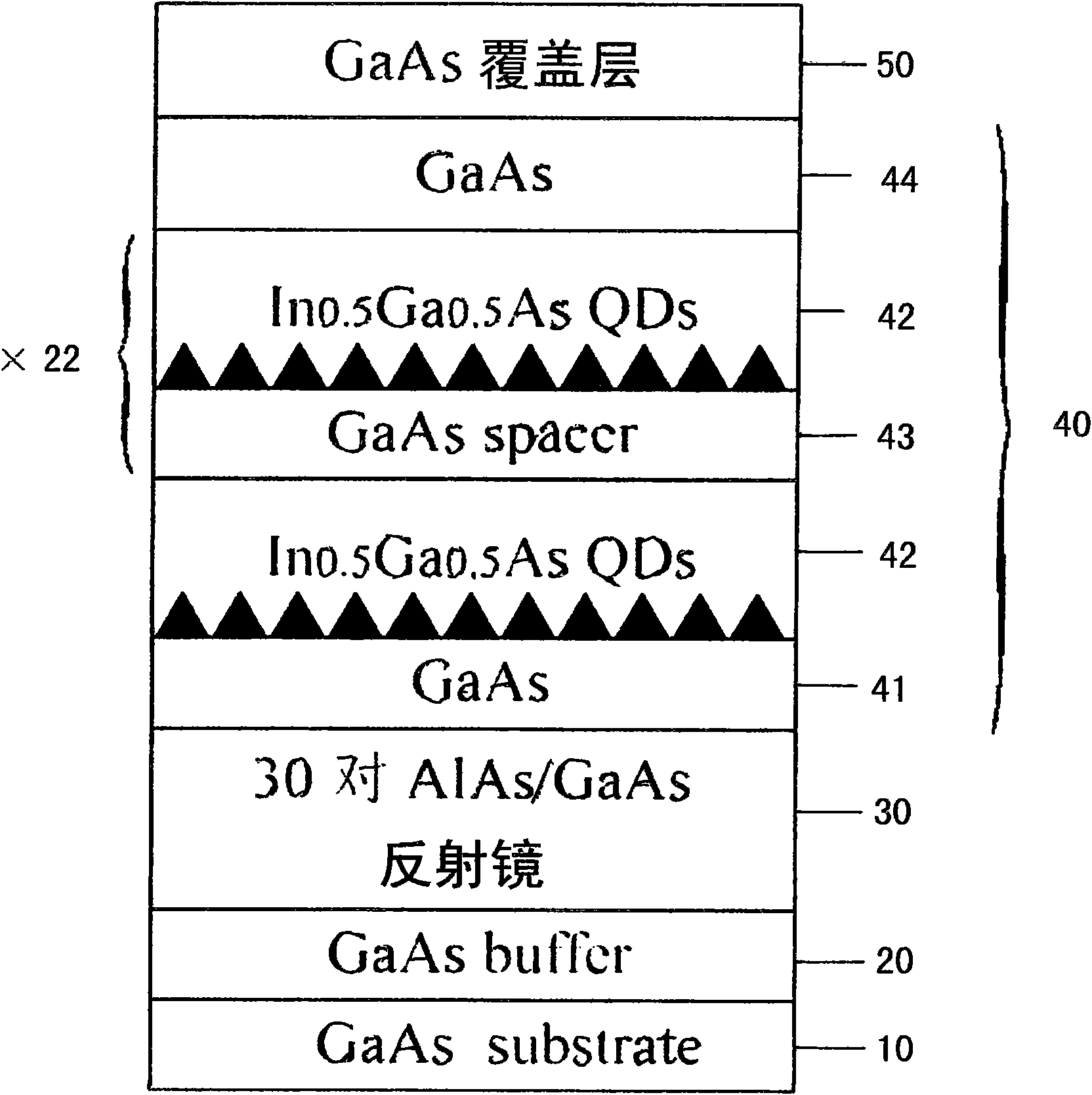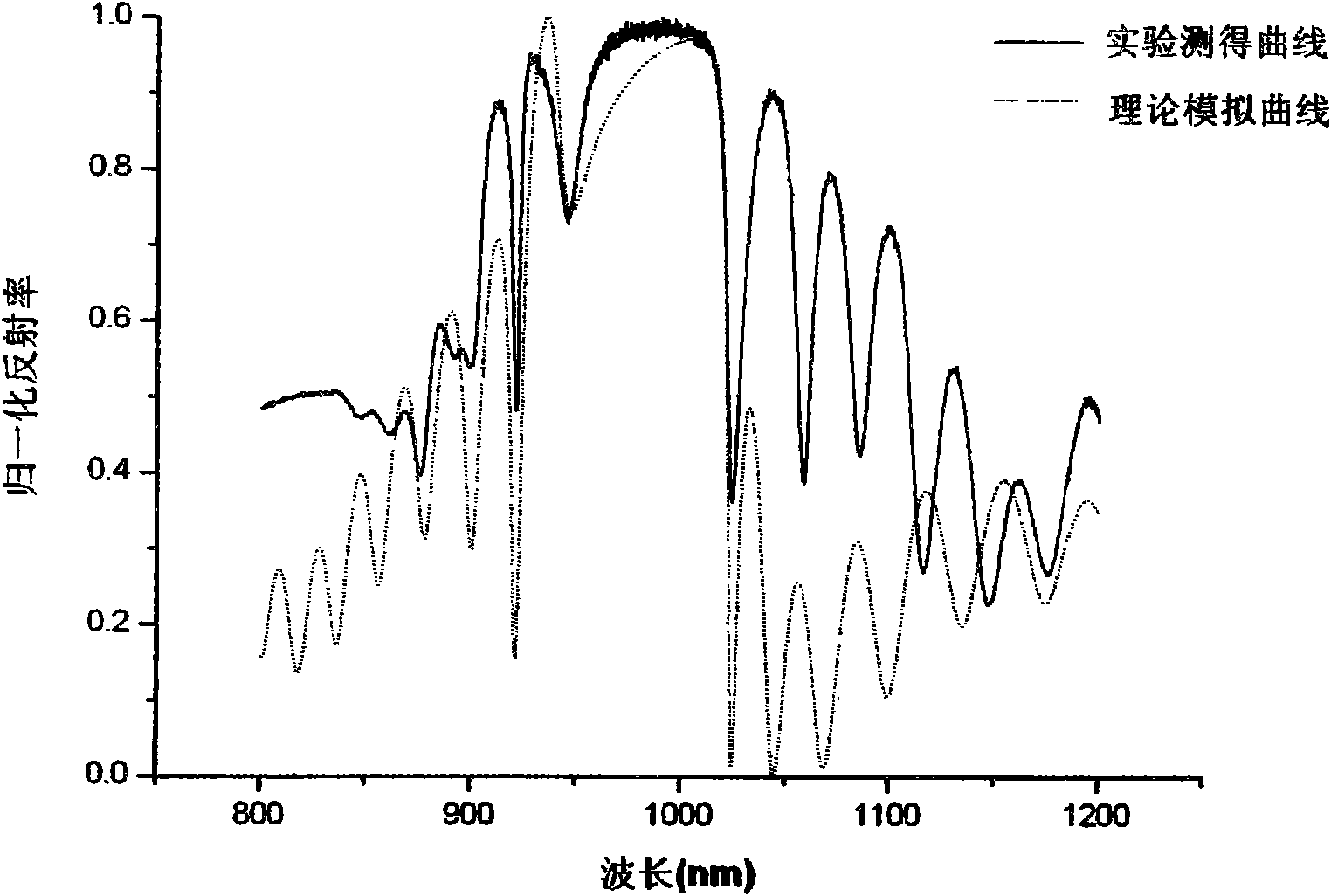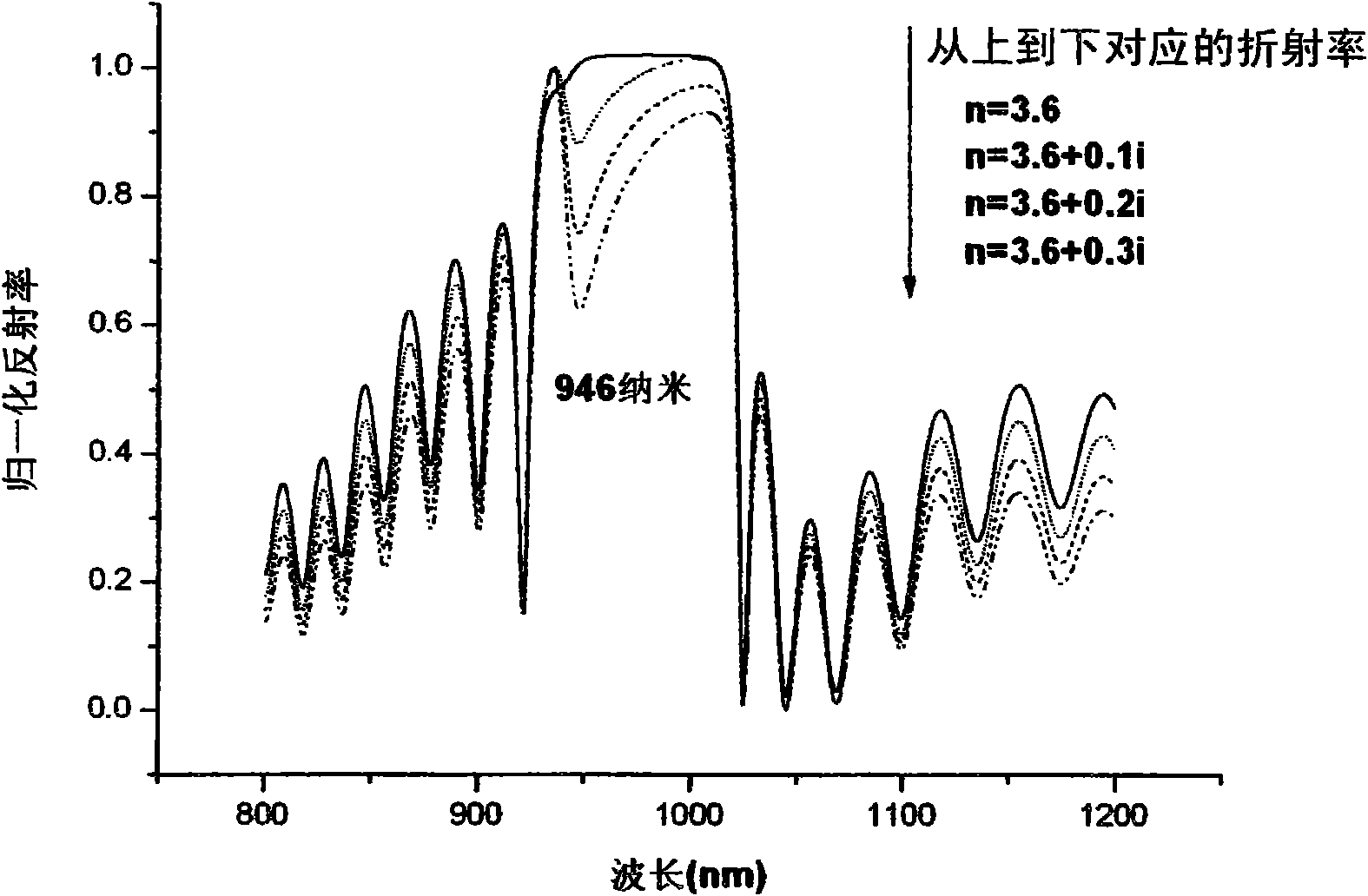Method for judging effective cavity mode of resonant cavity enhanced photodetector without upper reflector
A technology of photodetectors and mirrors, which is applied in the measurement of scattering characteristics, circuits, electrical components, etc., can solve the problems of cavity mode half-height width, leaky mode, etc., and achieve the effect of high quantum efficiency
- Summary
- Abstract
- Description
- Claims
- Application Information
AI Technical Summary
Problems solved by technology
Method used
Image
Examples
Embodiment Construction
[0032] specific implementation plan
[0033] The present invention will be further described below in conjunction with example
[0034] Step 1: The structure of our mirror-less resonator-enhanced photodetector is designed as figure 1 shown. The detector structure includes a substrate 10, a buffer layer 20, a lower reflector 30, a cavity 40, and a top cladding layer 50, wherein the lower reflector is composed of 30 pairs of AlAs / GaAs, and the active region in the cavity 40 is partially composed of 23 A group of InGaAs quantum dots 42 and a GaAs spacer layer 43 are formed, and the lower GaAs layer 41 and the upper GaAs layer 44 are GaAs bulk materials constituting the cavity. The central working wavelength of the detector is designed to be around 1 micron, and the designed detector structure is grown by MBE equipment.
[0035] Wherein the substrate 10 of the device structure, the buffer layer 20, the main body of the cavity 40 and the top cladding layer 50 are made of gallium...
PUM
 Login to View More
Login to View More Abstract
Description
Claims
Application Information
 Login to View More
Login to View More - R&D
- Intellectual Property
- Life Sciences
- Materials
- Tech Scout
- Unparalleled Data Quality
- Higher Quality Content
- 60% Fewer Hallucinations
Browse by: Latest US Patents, China's latest patents, Technical Efficacy Thesaurus, Application Domain, Technology Topic, Popular Technical Reports.
© 2025 PatSnap. All rights reserved.Legal|Privacy policy|Modern Slavery Act Transparency Statement|Sitemap|About US| Contact US: help@patsnap.com



